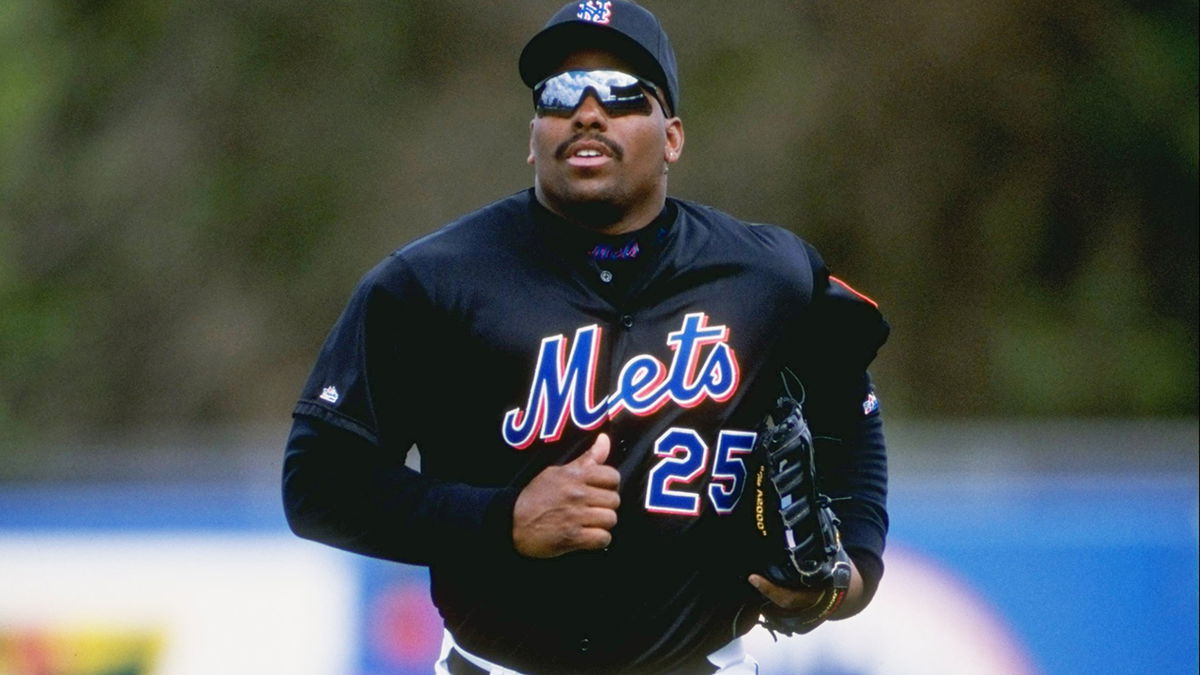
Imago
8 Mar 1999: Outfielder Bobby Bonilla #25 of the New York Mets in action during the Spring Training game against the Montreal Expos at the Thomas J. White Stadium in Port St. Lucie, Florida. The Mets defeated the Expos 2-1.

Imago
8 Mar 1999: Outfielder Bobby Bonilla #25 of the New York Mets in action during the Spring Training game against the Montreal Expos at the Thomas J. White Stadium in Port St. Lucie, Florida. The Mets defeated the Expos 2-1.
Every July 1, something odd happens in the baseball universe. The New York Mets cut a check for a staggering $1,19 million. The recipient is Bobby Bonilla, a 62-year-old former player who last played for the team in 1999. This annual event, now famously known as “Bobby Bonilla Day,” has become a running joke and a financial cautionary tale. It all goes back to an agreement dating to the year 2000, a decision wrapped in good intentions and a deeply misguided gamble.
Watch What’s Trending Now!
It all started when the Mets released Bonilla. They remained on the hook for $5.9 million on his contract. Instead of a simple payout, they offered a deferred deal with 8% annual interest. The Mets’ ownership, heavily invested with a financier named Bernie Madoff, believed they could easily out-earn that 8%. Madoff was promising double-digit returns. So, the Mets thought they would make a huge profit. That plan, however, spectacularly blew up in the team’s face when Madoff’s historic Ponzi scheme collapsed, leaving the team in the lurch.
One of the architects of that infamous deal, former Mets General Manager Steve Phillips, now sees the humor in the situation. He recently opened up about his role in creating the legendary contract. With a laugh, Phillips boldly declared his pride in the deal’s legacy.“It seemed like a good idea when we did it!” Phillips exclaimed on MLB Network Radio’s The Leadoff Spot. “I wanted to be a trendsetter, and you’re welcome Los Angeles Dodgers… I’m an influencer now. I feel really proud of this.”
ADVERTISEMENT
“It seemed like a good idea when we did it!”@StevePhillipsGM explains the origins of Bobby Bonilla Day:
📺 The Leadoff Spot on @MLBNetwork with @Xavier_Scruggs
🔗 https://t.co/iXax8hx4iO pic.twitter.com/5QKevOVsSL— MLB Network Radio on SiriusXM (@MLBNetworkRadio) July 1, 2025
Phillips then pulled back the curtain on exactly how the deal came together. He recounted the moment the team’s owner, Fred Wilpon, gave him a specific instruction. It set in motion one of the most talked-about contracts in sports history. “We were releasing Bobby Bonilla, and the owner, Fred Wilpon, said to me, check with the accounting department if we were to invest the money with Bernie. Now Bernie was Bernie Madoff,” Phillips explained. The franchise’s plan was to invest Bonilla’s $6.5 million, defer it for 10 years, and then pay it out over 25 years. He believed the approach would generate millions in profit.
Yet in 2025, the conversation around deferred money has shifted from quirky trivia to front-page business. This past winter, the Los Angeles Dodgers didn’t just dip their toes into the deferred-payments pool—they made a cannonball splash. Shohei Ohtani’s record-shattering $700 million contract included an unprecedented $680 million in deferred payments, with Ohtani set to receive $68 million per year starting in 2034—a structure so bold it instantly became the new benchmark for creative financing in sports.
ADVERTISEMENT
The Dodgers and Mets aren’t alone in their strategy, but the scale of their deferrals stands out; other teams have followed suit.
ADVERTISEMENT
Beyond Bobby Bonilla: A look at other deferred deals
It is surprisingly common in baseball for teams to continue paying players years after they retire. In fact, Bonilla’s contract was inspired by another Mets contract with pitcher Bret Saberhagen. He still receives $250,000 annually from the team in an agreement that does not expire until 2028. Other teams have followed suit. Through 2026, the Boston Red Sox will be paying Manny Ramírez $24.2 million in total. Pitching ace Max Scherzer will collect a massive $105 million from the Washington Nationals until 2028.
Maybe the prince, ready to inherit Bonilla’s throne, is ex-Baltimore Orioles slugger Chris Davis. His contract might be the most complicated of them all. As part of the deal, Davis will receive $59 million in deferred payments over a 15-year period, which only began in 2023. This includes annual payments of $9.16 million through 2025, followed by smaller amounts that will continue all the way until 2037.
Top Stories
Blue Jays Warned of Dire Fallout as Scott Boras Forced Into Desperate Bregman Tactics Amid Red Sox Dilemma

Hal Steinbrenner’s Yankees Ownership Beyond Repair as Mets Hellbent on Cody Bellinger: NY Insider

Did Rangers’ Corey Seager & Marcus Semien Have Beef Between Them? Texas Fans Feel Otherwise

Juan Soto’s Need For Control Uncovered After Denying Mets Locker Room Beef With Francisco Lindor

Blue Jays Pushed Toward Tough Bo Bichette Call as World Series Star’s Toronto Return Turns Uncertain

One of the most mind-boggling parts of Bobby Bonilla Day is the salary comparison. Because of baseball’s strict pay structure for young players, Bonilla’s annual check is actually more than what some of the game’s brightest rising stars receive. In 2025, multiple future phenoms will be making less than the retired slugger. The list ranges from flamethrowers like Pittsburgh Pirates pitcher Paul Skenes, earning $875,000; Detroit Tigers outfielder Riley Greene at $812,400; and the Chicago Cubs’ Pete Crow-Armstrong at $771,000—all of whom are making huge impacts on the field.
ADVERTISEMENT

ADVERTISEMENT
The legend of Bobby Bonilla Day is a testament to how a single financial decision can echo for decades. The annual payments will continue to arrive every July 1st until 2035, at which point Bonilla will be 72 years old. What do you think will be the next legendary contract that fans talk about for decades to come?
ADVERTISEMENT
ADVERTISEMENT
ADVERTISEMENT

